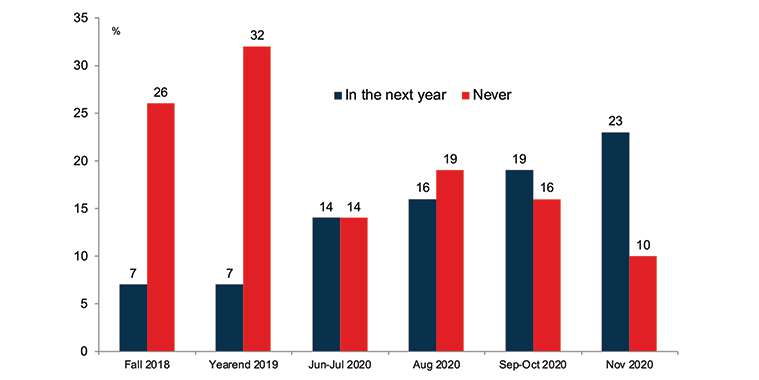By Peter Squire
This past year has been unlike anything we’ve ever experienced in our lifetime. It has underscored the importance of having a place to call home during these uncertain times.
The major Canadian banks and local credit unions have and continue to play a significant role in making homeownership possible through their mortgage offerings and other financial practices such as prequalifying first-time buyers to purchase a home.
The Winnipeg Regional Real Estate Board (WRREB) has had the distinct privilege of featuring some of the banks’ top economists as keynote speakers at its annual forecast breakfasts. Last year, for example, BMO’s chief economist Douglas Porter gave an insightful presentation on the global and national economy with a focus on housing. In particular, he reinforced the widely known view that Manitoba and Winnipeg have some of the most affordable housing prices in the country.
At this year’s virtual Market Insights event to be held on February 3 from 9:00 to 10:30 a.m. CIBC is the title sponsor. In previous years, CIBC had their deputy chief economist Benjamin Tal present and he has always provided a big picture perspective on how global forces and the economy in general shape and influence local real estate markets. We now know how the global pandemic in 2020 was profoundly impactful on homeownership and will continue to be an important factor in 2021.
Next week, Canadian Real Estate Association’s senior economist Shaun Cathcart is presenting at Market Insights. Cathcart will be focusing on the Canadian market and how it was able in 2020 to set a new national record of over 550,000 MLS® sales. Those attending will appreciate and understand just how fortunate we are in Manitoba when observing the sharp differences in house prices across the country and how much more some of the regional markets in Ontario saw their home prices rise last year.
Two of the national banks have been concerned enough about Canadian home prices to do their own monitoring throughout the year. RBC has the Housing Affordability Measure which has been in place since 1985. It shows the proportion of pre-tax median household income required to service the cost of mortgage payments (principal and interest), property taxes and utilities based on an average priced single-family home and condo apartment. The most recent quarterly report released in
December 2020 stated that Winnipeg — despite some third quarter erosion in affordability due to unprecedented buyer demand — is still affordable for a typical buyer as directly in line with its long-term average of 29.9%.
Condo apartments in particular are favourable as they only require 20.3% of median income based on their index price of $220,900 which is below the long-term average of 23.2%.
The National Bank of Canada has established the housing affordability monitor. In its 2020 third quarter release, they indicated that housing affordability improved, and was largely attributable to the lower interest rates which saw a decrease of 43 basis points in the 5-year mortgage benchmark.
Winnipeg continues to show excellent housing affordability with $71,071 being the required household income to buy the representative home and just $47,736 necessary to purchase the representative condominium. In relation to the national average, Winnipeg garners a favourable 55.8% premium for a home purchase and a 33.0% premium/discount for buying a condominium compared to renting a 2-bedroom condo in Winnipeg. This is significant for renters in
particular as rents have continued to rise in the last few years while the cost of servicing a mortgage for a median-priced condo has decreased since 2018.
Considering how condo sales activity in the WRREB market improved considerably as 2020 progressed to set an all-time record of 1,847 sales — with December capping things off with a 62% increase over the same month in 2019 — you have to surmise that renters are already taking advantage of this affordable opportunity.
Picking up on better housing affordability due to lower interest rates is a chart (they call them hot charts) that the National Bank put out in December 2020. This chart is an attention-grabber as it illustrates how non-homeowners (potential first-time buyers) have shown a marked rise in their desire to enter the homeownership market.
This chart (above) is based on Mortgage Professional Canada’s chief economist Will Dunning’s consumer intention surveys on housing preference. It is really remarkable to see the shifts outlined. Pre-pandemic, 32% of non-homeowners said they never wanted to own a home and now there are only 10% with that mindset, while those wishing to buy a home over the next year went from 7% to 23% in November 2020.
The WRREB and the Manitoba Real Estate Association (MREA) also conducted a buyer intention survey with Probe Research in June 2020. The results were overwhelmingly supportive and positive of buyers’ intent to proceed with home purchases despite the pandemic.
To understand more about a year like no other and find out what is in store for 2021, register for WRREB’s Market Insights event by visiting www.winnipegregionalrealestateboard.ca and clicking on “REALTORS® in the Community” and then 2021 Market Insights.
Peter Squire is the Winnipeg Regional Real Estate Board’s Vice-President, External Relations & Market Intelligence.



